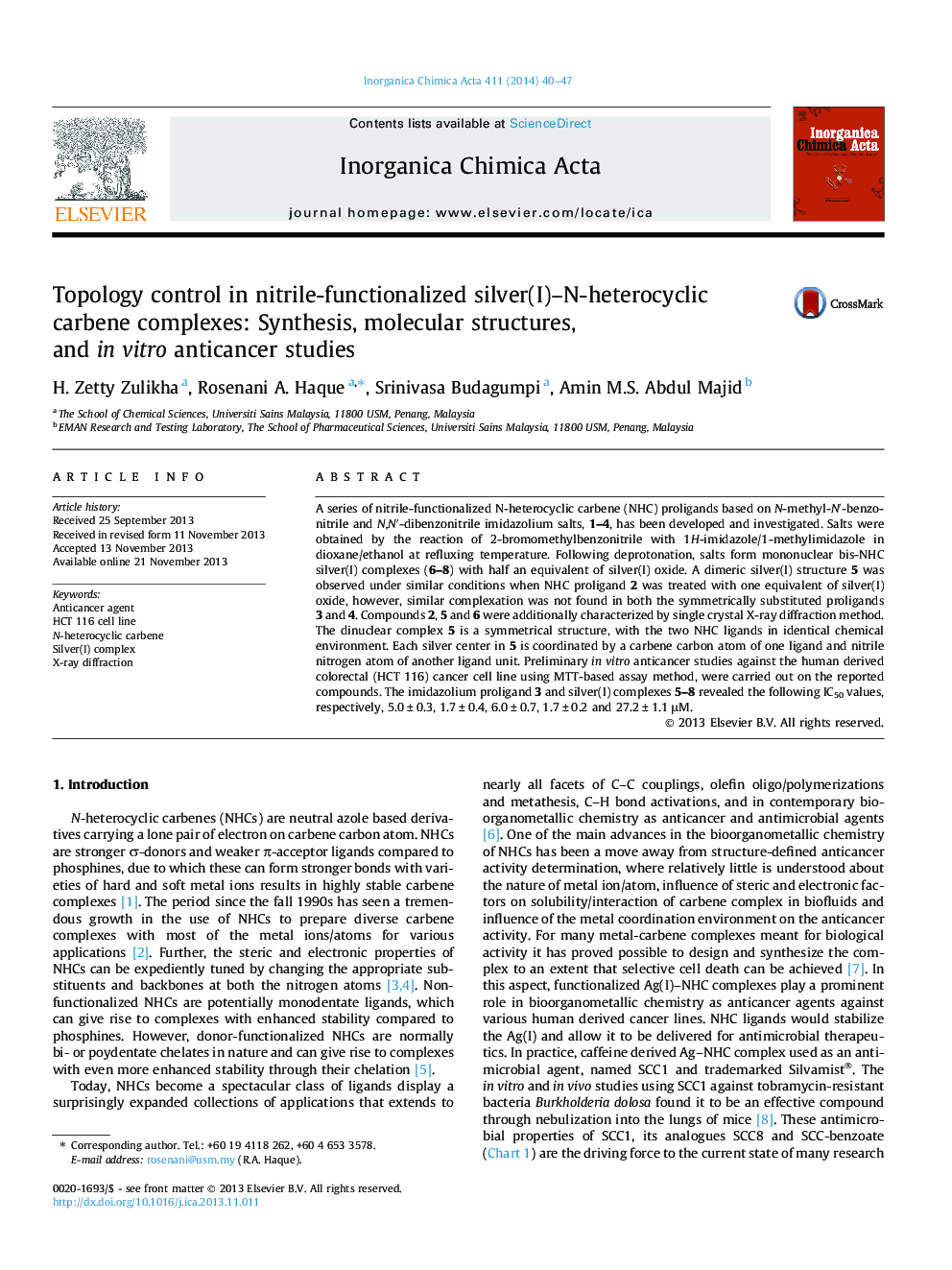| Article ID | Journal | Published Year | Pages | File Type |
|---|---|---|---|---|
| 1306969 | Inorganica Chimica Acta | 2014 | 8 Pages |
•Ag(I)–NHC complexes of nitrile-functionalized imidazole-based NHCs were prepared.•Topology of these complexes was controlled by using finite amount of Ag2O.•Structures of compounds were determined by spectral and X-ray diffraction methods.•Imidazolium salts and Ag(I) complexes were screened for the anticancer tests.•Two complexes showed promising anticancer activity with 1.7 ± 0.2 μM IC50 values.
A series of nitrile-functionalized N-heterocyclic carbene (NHC) proligands based on N-methyl-N′-benzonitrile and N,N′-dibenzonitrile imidazolium salts, 1–4, has been developed and investigated. Salts were obtained by the reaction of 2-bromomethylbenzonitrile with 1H-imidazole/1-methylimidazole in dioxane/ethanol at refluxing temperature. Following deprotonation, salts form mononuclear bis-NHC silver(I) complexes (6–8) with half an equivalent of silver(I) oxide. A dimeric silver(I) structure 5 was observed under similar conditions when NHC proligand 2 was treated with one equivalent of silver(I) oxide, however, similar complexation was not found in both the symmetrically substituted proligands 3 and 4. Compounds 2, 5 and 6 were additionally characterized by single crystal X-ray diffraction method. The dinuclear complex 5 is a symmetrical structure, with the two NHC ligands in identical chemical environment. Each silver center in 5 is coordinated by a carbene carbon atom of one ligand and nitrile nitrogen atom of another ligand unit. Preliminary in vitro anticancer studies against the human derived colorectal (HCT 116) cancer cell line using MTT-based assay method, were carried out on the reported compounds. The imidazolium proligand 3 and silver(I) complexes 5–8 revealed the following IC50 values, respectively, 5.0 ± 0.3, 1.7 ± 0.4, 6.0 ± 0.7, 1.7 ± 0.2 and 27.2 ± 1.1 μM.
Graphical abstractNew Ag(I)–carbene complexes of nitrile-functionalized NHC ligands were prepared and structurally characterized by spectral and X-ray diffraction methods. Topology of these complexes was controlled by using the definite amount of silver(I) oxide. Two of the complexes displayed higher anticancer activity (IC50 = 1.7 ± 0.2 μM) against HCT 116 cancer cell line.Figure optionsDownload full-size imageDownload as PowerPoint slide
